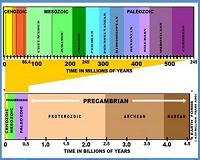| . |  |
. |
Cambridge, England (UPI) Apr 27, 2010 A British-led study has found striking similarities among the human brain, the nervous system of the nematode worm Caenorhabditis elegans and computer chips. A team of U.K., U.S. and German neuroscientists and computer experts led by University of Cambridge Professor Edward Bullmore compared the way the systems are organized and found all three have the same networking principles. The researchers said they found all three share two basic properties: All have the same architecture, with the same patterns repeating at different scales; and all show what's known as Rentian scaling -- a rule used to describe the relationship between the number of elements in a given area and the number of links between them. "These striking similarities can probably be explained because they represent the most efficient way of wiring a complex network in a confined physical space -- be that a three-dimensional human brain or a two-dimensional computer chip," Bullmore said. He said the findings, aside from expanding the understanding of the human brain's evolution, show humans can learn important lessons about evolution by studying the way in which technology has developed and by looking to very simple organisms such as the nematode. "This challenges the commonly held belief that the human brain is special," Bullmore said. "In fact, it actually has much in common with simple organisms such as the worm and with other animal species." The paper appears in the journal PLoS Computational Biology.
Share This Article With Planet Earth
Related Links All About Human Beings and How We Got To Be Here
 The Age Of Aquarius? Nope, It Is The Anthropocene Epoch
The Age Of Aquarius? Nope, It Is The Anthropocene EpochWashington DC (SPX) Apr 26, 2010 In just two centuries, humans have wrought such vast and unprecedented changes to our world that we actually might be ushering in a new geological time period that could alter the planet for millions of years, according to a group of prominent scientists that includes a Nobel Laureate. They say the dawning of this new epoch could lead to the sixth largest mass extinction in the Earth's history. ... read more |
|
| The content herein, unless otherwise known to be public domain, are Copyright 1995-2010 - SpaceDaily. AFP and UPI Wire Stories are copyright Agence France-Presse and United Press International. ESA Portal Reports are copyright European Space Agency. All NASA sourced material is public domain. Additional copyrights may apply in whole or part to other bona fide parties. Advertising does not imply endorsement,agreement or approval of any opinions, statements or information provided by SpaceDaily on any Web page published or hosted by SpaceDaily. Privacy Statement |